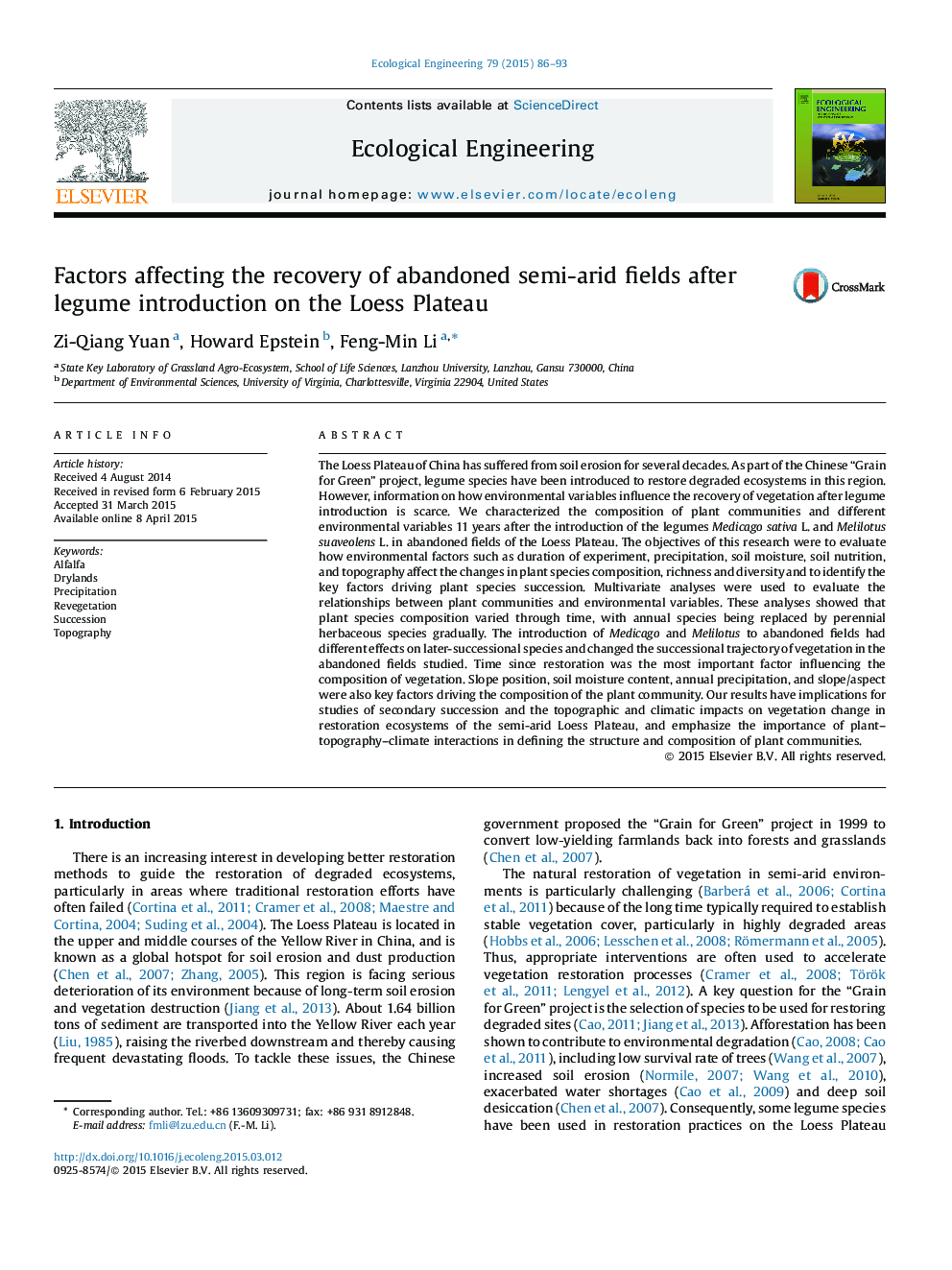| Article ID | Journal | Published Year | Pages | File Type |
|---|---|---|---|---|
| 4389122 | Ecological Engineering | 2015 | 8 Pages |
The Loess Plateau of China has suffered from soil erosion for several decades. As part of the Chinese “Grain for Green” project, legume species have been introduced to restore degraded ecosystems in this region. However, information on how environmental variables influence the recovery of vegetation after legume introduction is scarce. We characterized the composition of plant communities and different environmental variables 11 years after the introduction of the legumes Medicago sativa L. and Melilotus suaveolens L. in abandoned fields of the Loess Plateau. The objectives of this research were to evaluate how environmental factors such as duration of experiment, precipitation, soil moisture, soil nutrition, and topography affect the changes in plant species composition, richness and diversity and to identify the key factors driving plant species succession. Multivariate analyses were used to evaluate the relationships between plant communities and environmental variables. These analyses showed that plant species composition varied through time, with annual species being replaced by perennial herbaceous species gradually. The introduction of Medicago and Melilotus to abandoned fields had different effects on later-successional species and changed the successional trajectory of vegetation in the abandoned fields studied. Time since restoration was the most important factor influencing the composition of vegetation. Slope position, soil moisture content, annual precipitation, and slope/aspect were also key factors driving the composition of the plant community. Our results have implications for studies of secondary succession and the topographic and climatic impacts on vegetation change in restoration ecosystems of the semi-arid Loess Plateau, and emphasize the importance of plant–topography–climate interactions in defining the structure and composition of plant communities.
